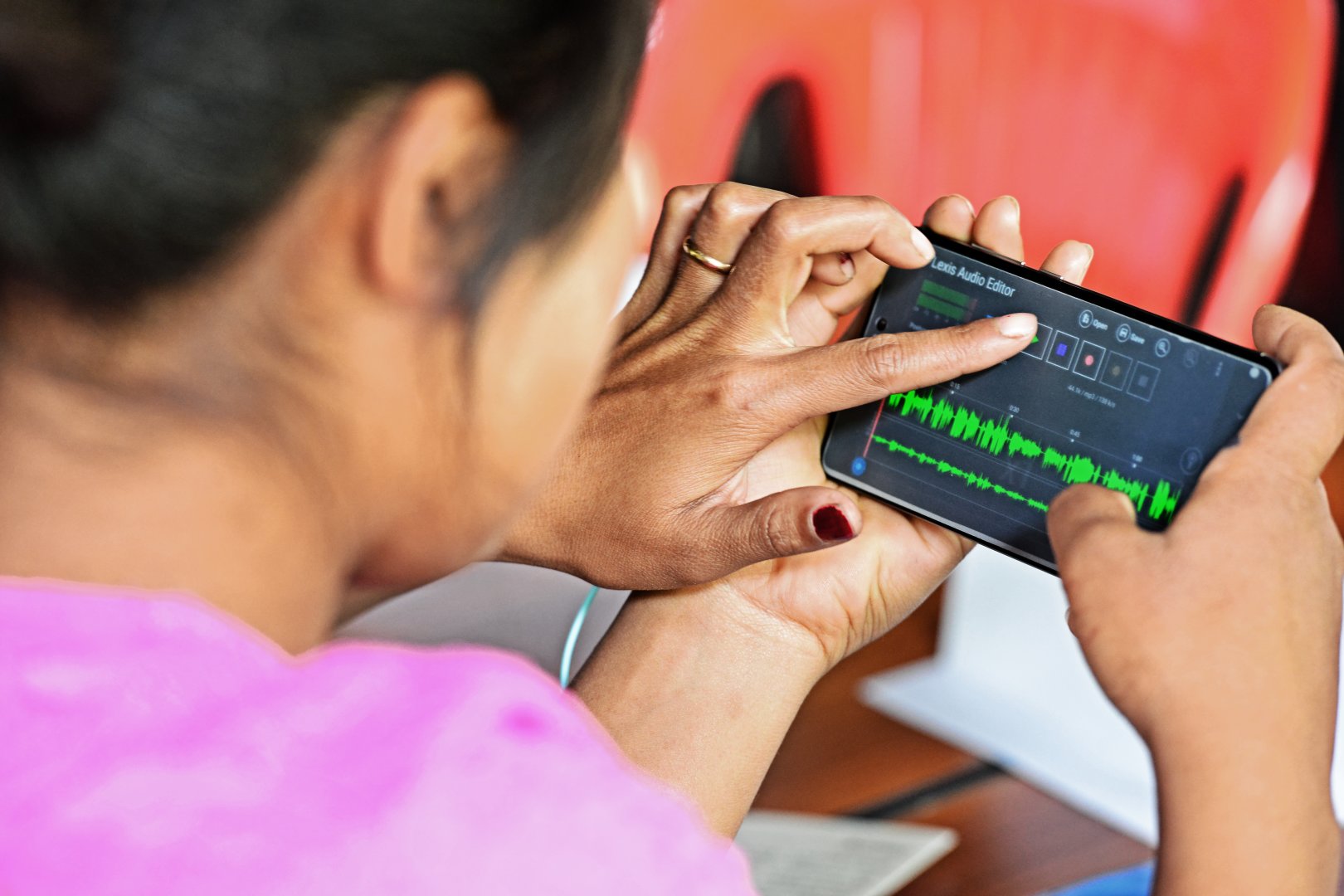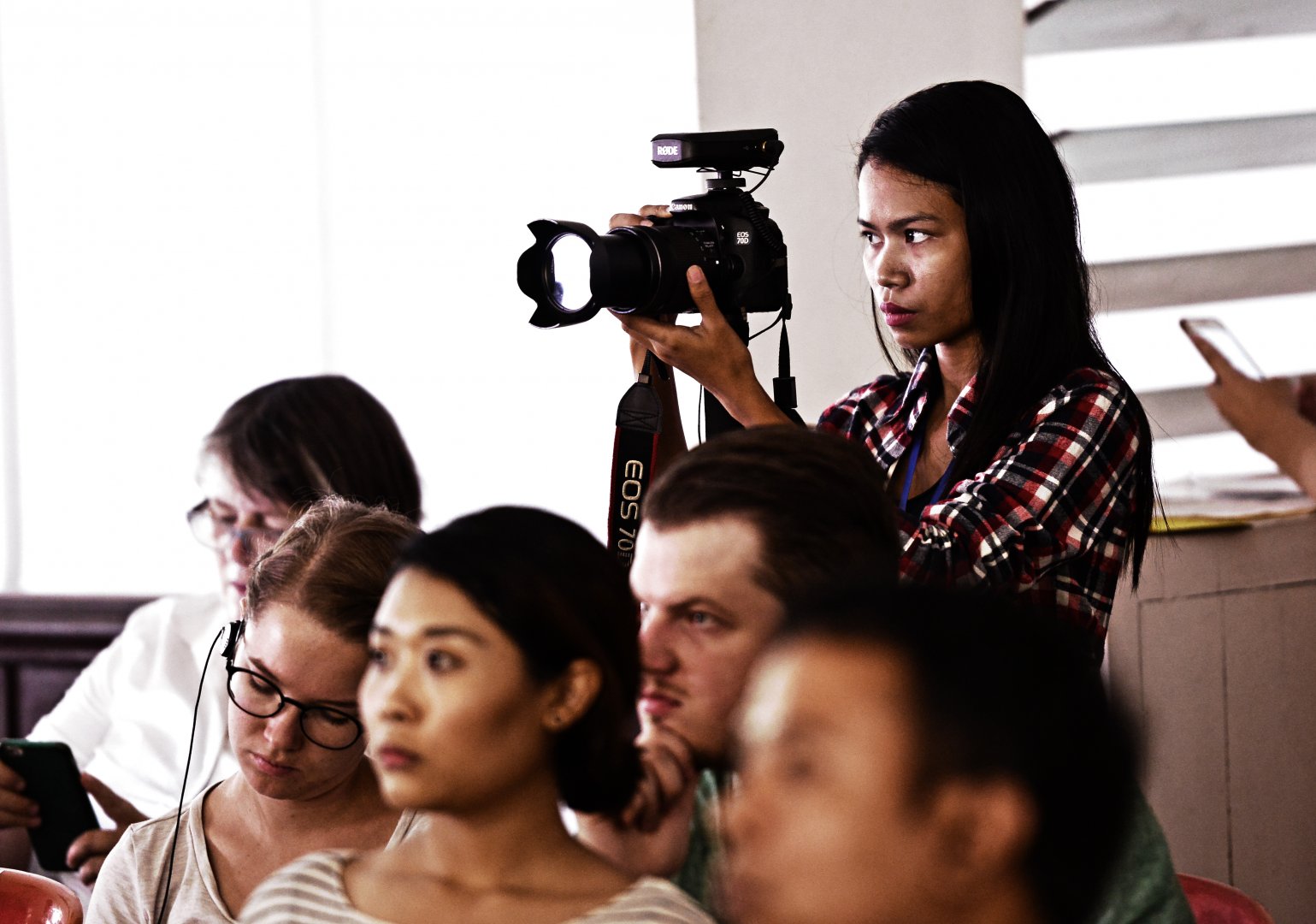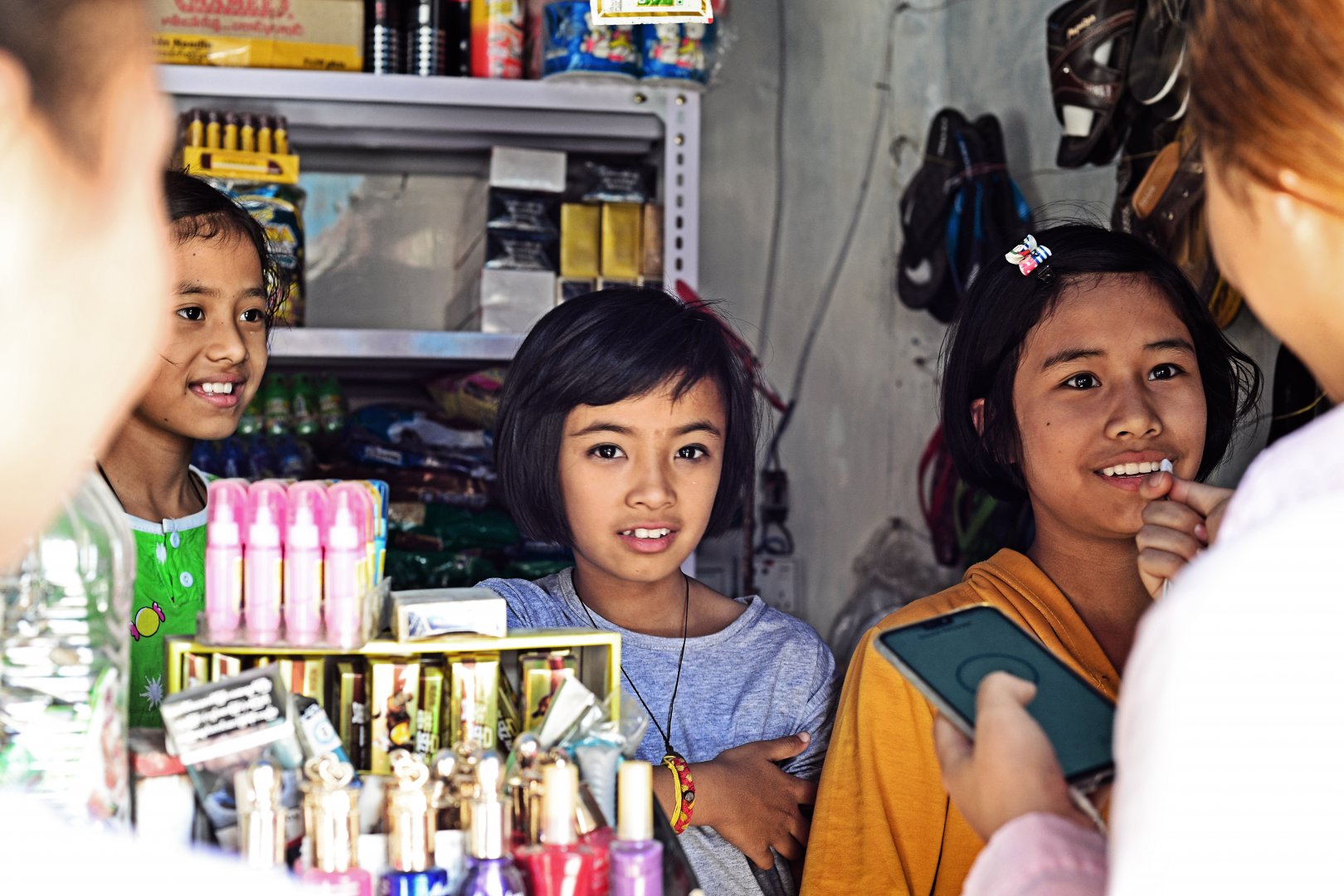
Photo: Chris Peken
Women journalists networks making a difference in Myanmar
Women journalists in Myanmar don’t have the same opportunities as men, and women are in many ways overlooked in media – but women journalists networks are inciting change.
Women journalists in Myanmar don’t have the same opportunities as men, and women are in many ways overlooked in media. But changes are slowly emerging says Tin Zar Aung, the general secretary of Myanmar Women Journalists Society, which is a network for women journalists in the country and a partner of IMS.
The women’s network works with several aspects of gender equality advancement. They offer trainings that strengthen women journalists in some of the skills needed in a modern media market. The network also conducts gender monitoring which, among other things, focuses on how often and in which role women are represented in media. Such data help increase the awareness in Myanmar media of gender inequality issues and blind spots. Lastly, they use their findings as a base for advocacy and arrange dialogue meetings with media houses to provide input and recommendations.
Building confidence and capacity
Over the past couple of years, around 70 women journalists in Myanmar have attended the network’s trainings. The network offers trainings on a variety of topics: gender-balanced reporting, English classes, counselling workshops for trauma healing, video journalism trainings and so-called gender TOTs, training of trainers, which teach the attendees how to conduct gender analysis and make strategies for implementation of gender sensitive guidelines.
The trainings are an important component for change, Tin Zar Aung emphasizes: “To improve gender equality in Myanmar, we must work for the empowerment of women. And that’s what we are doing: empowering women journalists and supporting them in strengthening their capacities as professionals.”

The benefits of the trainings are many, but to Tin Zar Aung one quality stands out: “The women in our trainings don’t just evolve on a professional level, but on a personal one too. They become much more confident and start to trust their skills as journalists. I think that is an absolutely necessary step which will give their future career a push forward,” she explains.
The gender monitoring and advocacy is also starting to show an affect, according to Tin Zar Aung. In 2015, when Myanmar Women Journalists Society was founded, gender inequality wasn’t perceived to be a problem by most media. “If we compare with the situation five years ago, we do see changes in the industry. Today, most media organisations have started to think of the lack of women representation and gender inequality as an issue,” she says.
Changing a culture
However, there’s still a long way to go. One of the most pervasive challenges that Myanmar Women Journalists Society and other feminist organisations faces are to convince people that gender inequality is, in fact, a problem in the country. On the contrary, there is a broad internal perception of Myanmar as a gender equal society and of women as having high status. Historically, the country has had women monarchs, and women have been landowners and taken part in the economic sphere. Facts like this seem to accumulate into the idea that if women are empowered in some areas, then gender equality isn’t an issue.
To Tin Zar Aung that is an important notion to challenge: “Most men are certain that women are free to do everything they want to. But that’s because they don’t know and can’t see the many kinds of discrimination we face.”

News editors send male reporters to conflict zones or remote areas because it is believed that women need to be protected. Then media management promotes male employees because they need people who have experience and are able to cover news from the whole country. “That is one of the ways women journalists are being discriminated, but it is perceived as a good thing because it is deeply rooted in Myanmar culture that women must be protected.”
Low female representation and persistent stereotypes
As a representative for Myanmar Women Journalists Society, she is often asked why a designated network for women is necessary. A report on news content that the network published in 2017 in collaboration with IMS-Fojo, gave Tin Zar Aung and other women’s rights advocates a new tool to prove their claim that Myanmar media is not gender equal.
The report shows that women only represent 16% of the voices portrayed in the media in Myanmar. Very few of them are sourced as experts – 7% – and spokespersons – 13% – compared to men. On the other hand, when the media use sources to represent domestic workers or homemakers, 100% of the time, those sources are women.
In the country’s newsrooms, the numbers are skewed as well; only 25-30% of all journalists are women. “Not only in the newsrooms do we need more women – the problem is just as big on a senior level. Most media management are men, and we see that it results in a missing or deficient consideration of the conditions for women journalists and fewer contributions by women in media. We need female decision-makers who will work to amplify women’s voices,” Tin Zar Aung states.

Keep pushing
Even though Myanmar Women Journalists Society is detecting progress, there is still a long way to go, especially in rural areas and in conflict zones.
“We are going to keep pushing for better working conditions for women journalist, gender equality in media and more women in media management,” she says and concludes: “Inequality in media affects the information that is available to the public because if we don’t have a diverse workforce and diverse news content that can provide the perspectives of women as well as men, then we can’t deliver good, varied journalism that reflects society.”




